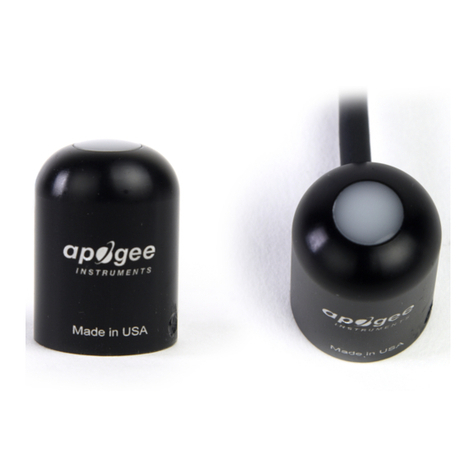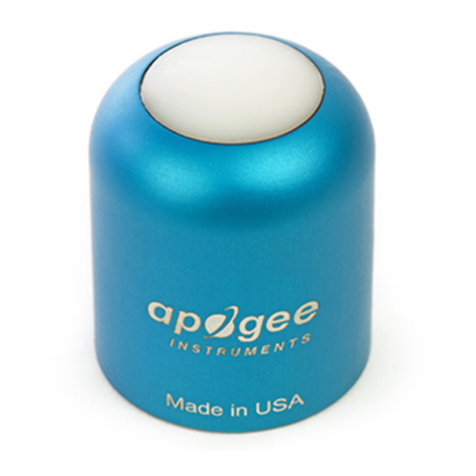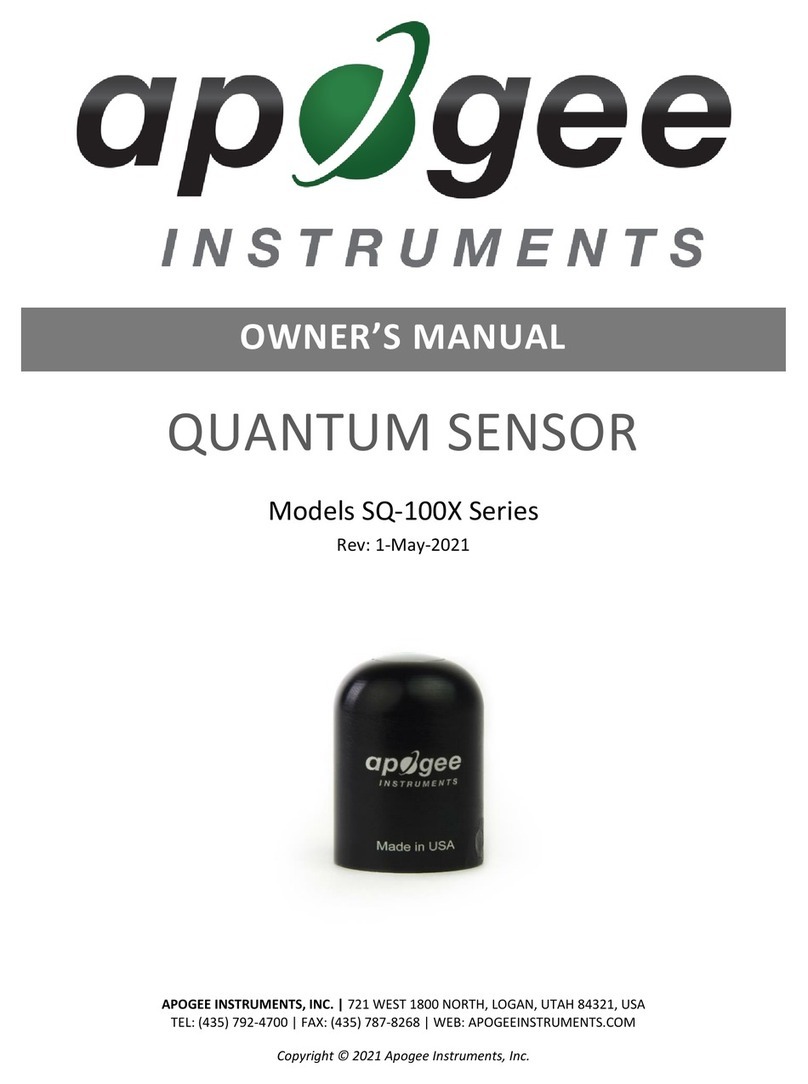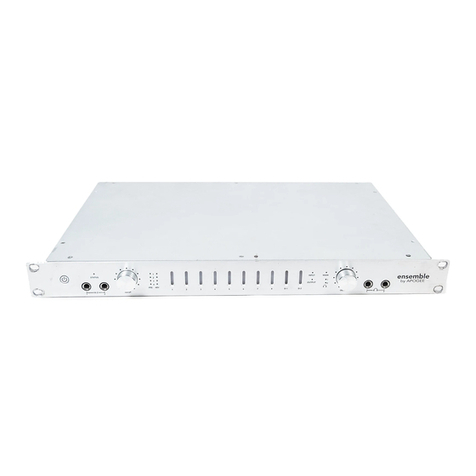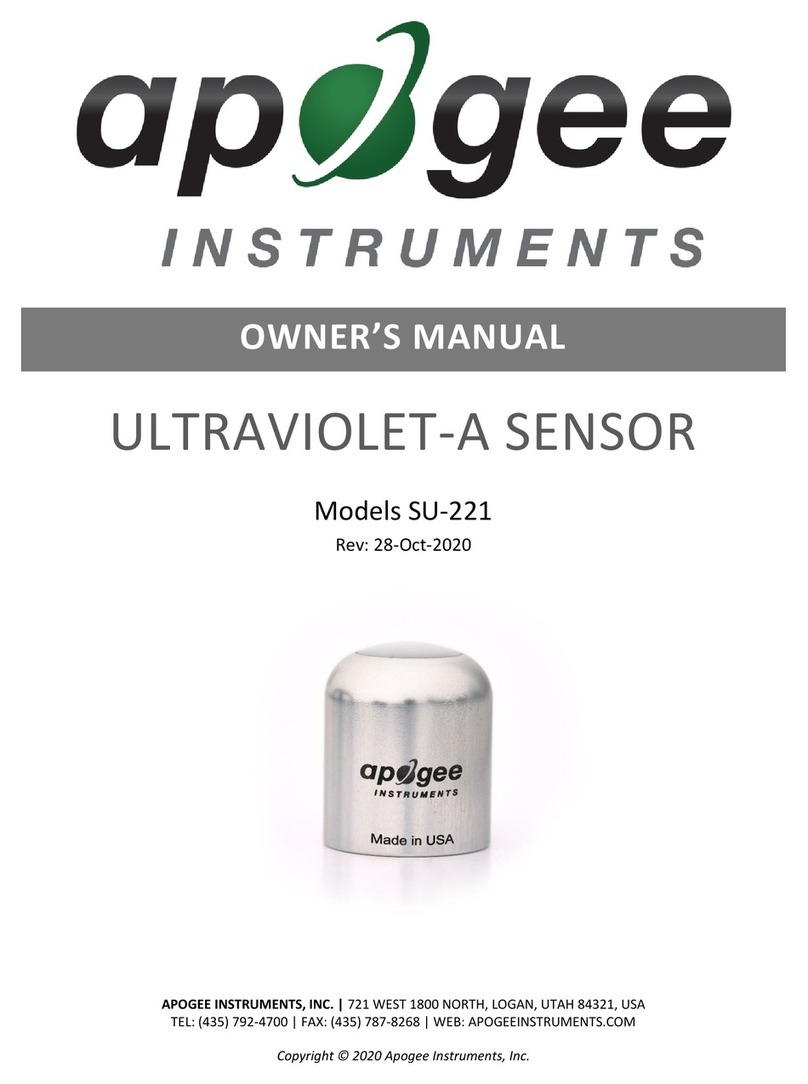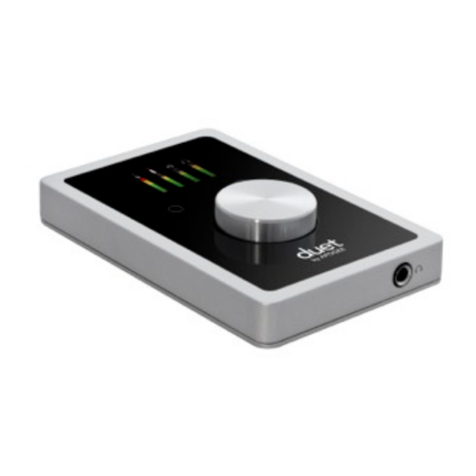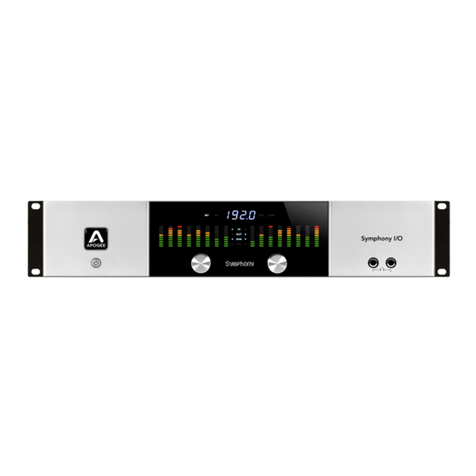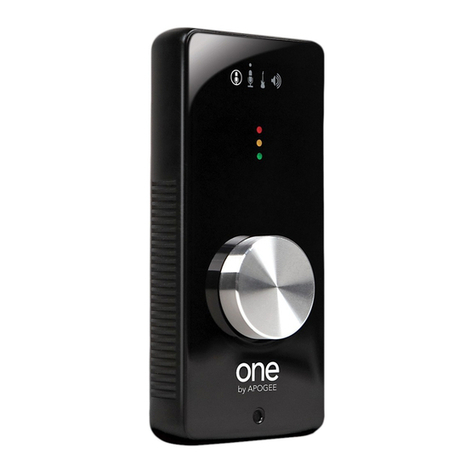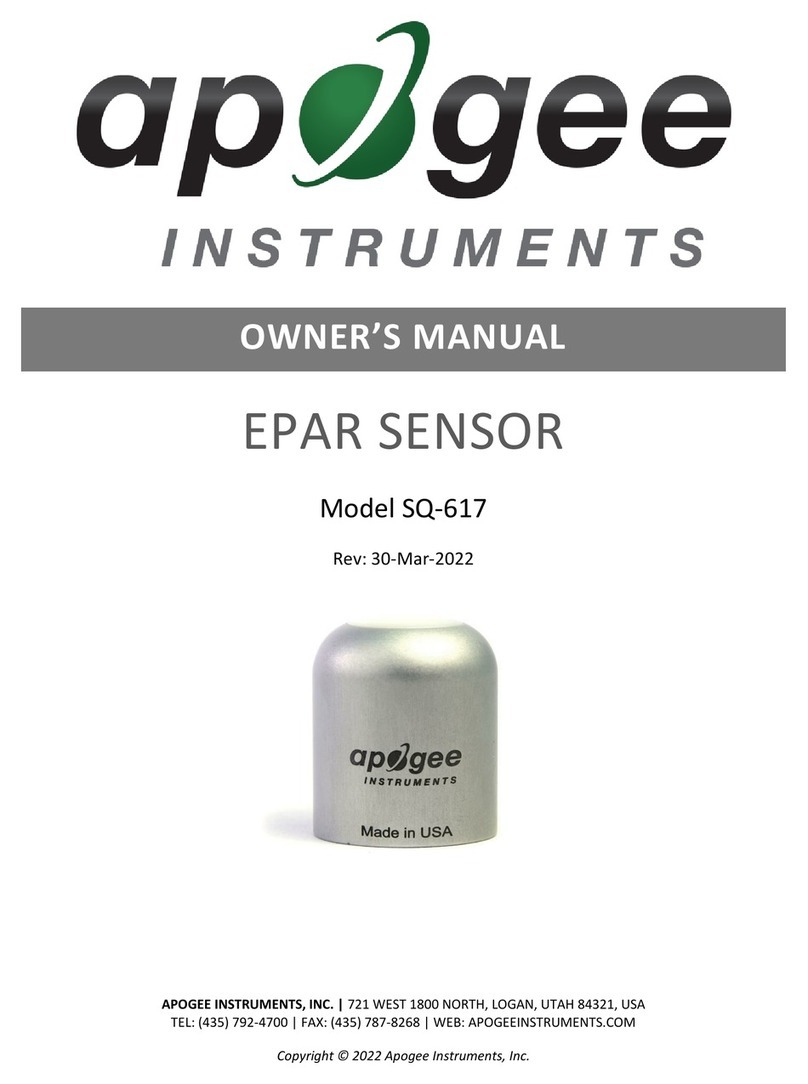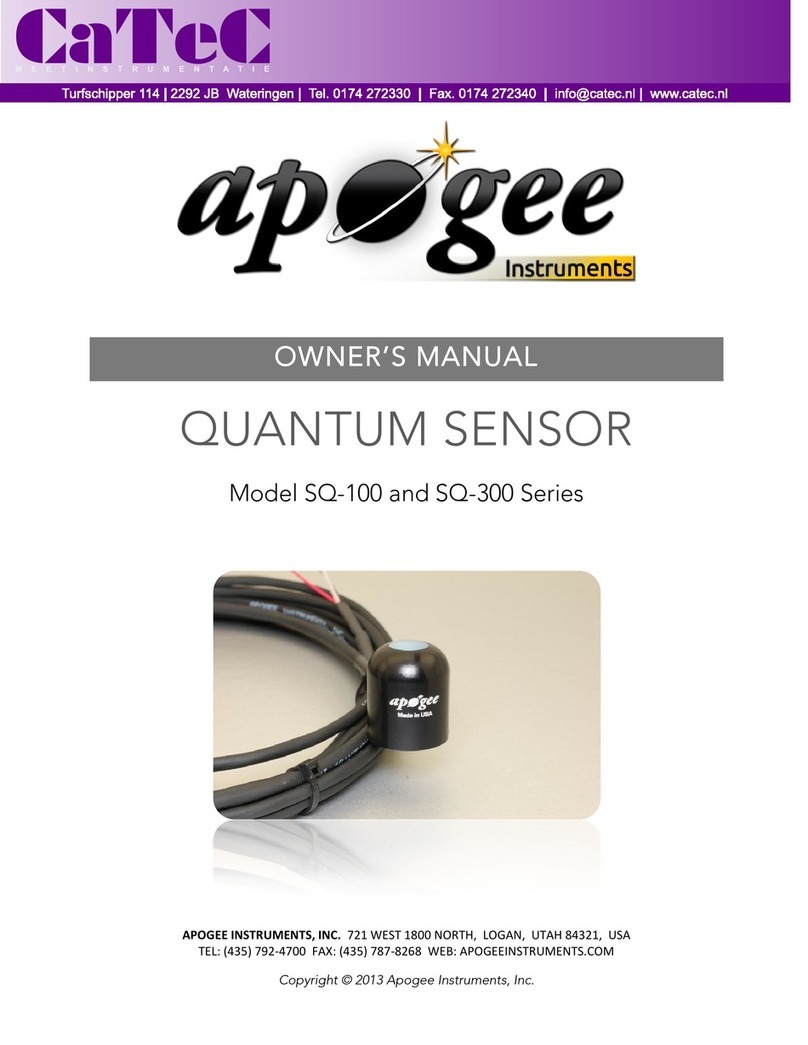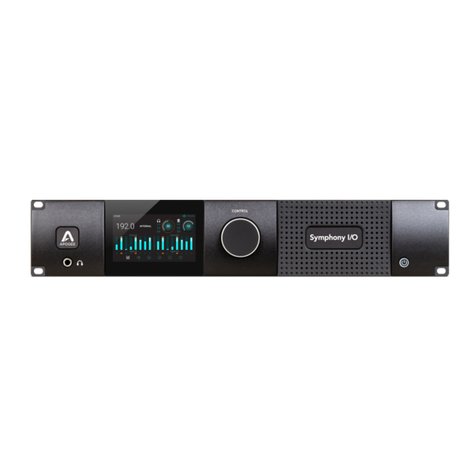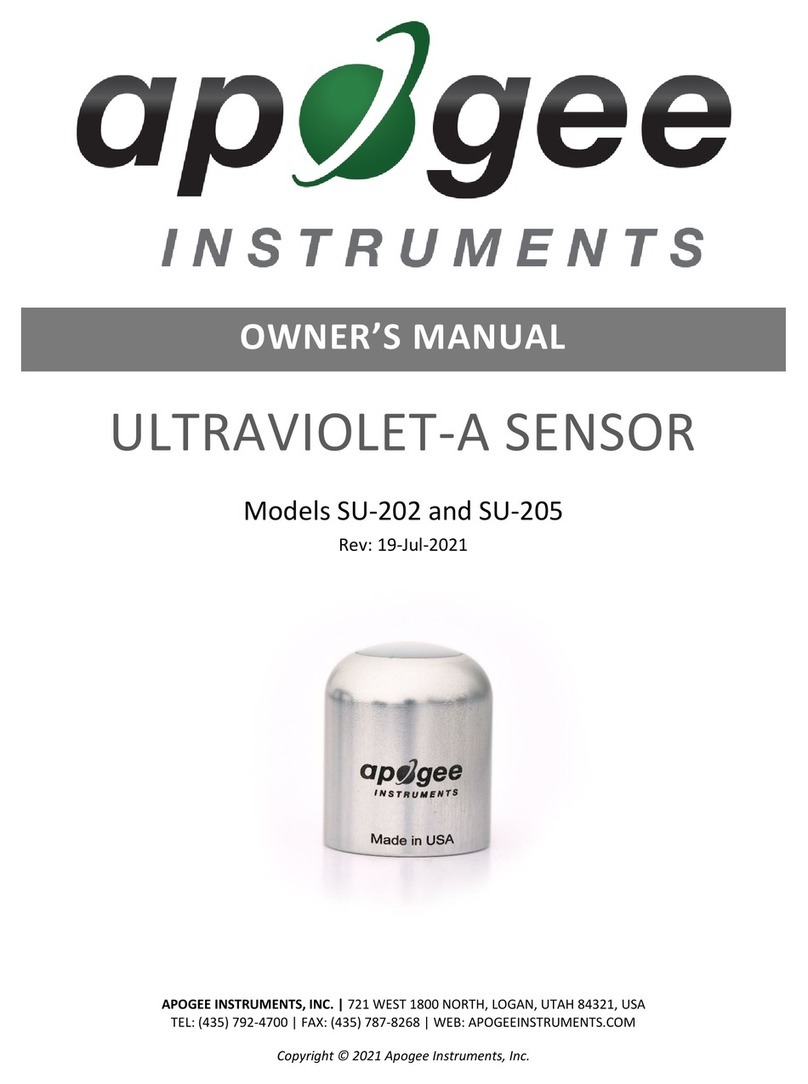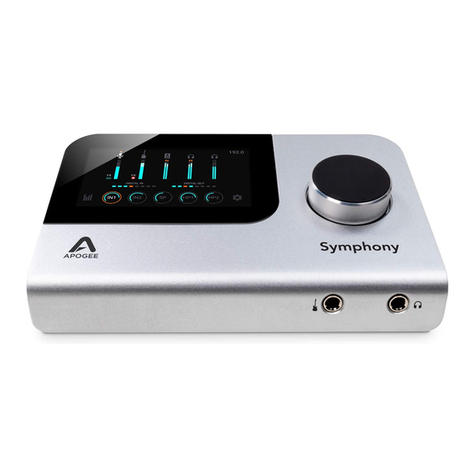
8
Cable Connectors
Apogee started offering in-line cable connectors on some
bare-lead sensors in March 2018 to simplify the process of
removing sensors from weather stations for calibration by
not requiring the full cable to be uninstalled back to the data
logger.
The ruggedized M8 connectors are rated IP67, made of
corrosion-resistant marine-grade stainless-steel, and
designed for extended use in harsh environmental
conditions.
Inline cable connectors are installed 30 cm from the head
Instructions
Pins and Wiring Colors:All Apogee connectors have six
pins, but not all pins are used for every sensor. There may
also be unused wire colors inside the cable. To simplify data
logger connection, we remove the unused pigtail lead colors
at the data logger end of the cable.
If you ever need a replacement cable, please contact us
directly to ensure ordering the proper pigtail configuration.
Alignment: When reconnecting your sensor, arrows on the
connector jacket and an aligning notch ensure proper
orientation.
Disconnection for extended periods: When disconnecting
the sensor for an extended period of time from a station,
protect the remaining half of the connector still on the
station from water and dirt with electrical tape or other
method.
A reference notch inside the connector ensures
proper alignment before tightening.
When sending sensors in for calibration, only send the short
end of the cable and half the connector.
Tightening: Connectors are designed to be firmly finger-
tightened only. There is an o-ring inside the connector that
can be overly compressed if a wrench is used. Pay attention
to thread alignment to avoid cross-threading. When fully
tightened, 1-2 threads may still be visible.

